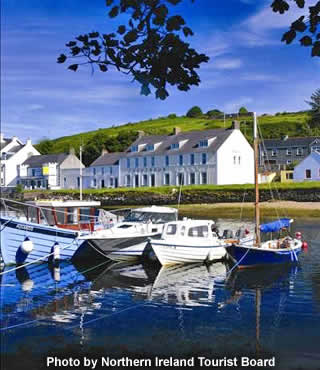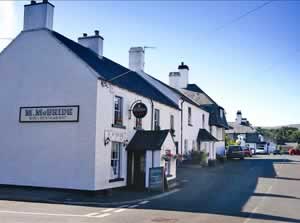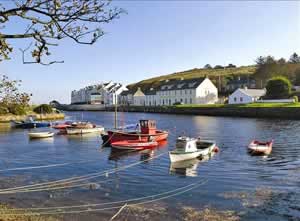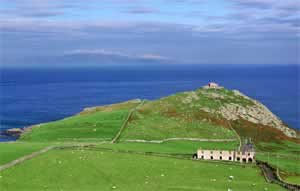Cushendun |
|
 |
|||
A piece of Cornwall on the Irish coast |
||||
|
||||
If you think this small coastal village looks like it's been recently relocated from Cornwall, you're nearly right. Most of its old-fashioned cottages were designed specifically to look like they came from that south-west county of England. |
||||
The idea was developed by a politician called Ronald McNeill, who wanted to pay tribute to his Cornish wife. He enlisted Clough Williams-Ellis to actually carry out the work. This renowned architect would go on to achieve lasting fame by putting an Italian-style village in the unfamiliar surroundings of the Welsh west coast. Ronald McNeill, pleased with his new village, later became known as Lord Cushendun. |
||||
 Cushendun Hotel Photo otfrom |
||||
The key part of Williams-Ellis' design was the central square, and its 7 surrounding cottages. Today, these have become craft shops and tea rooms. The nearby row of whitewashed houses was added later, after the death of Lord Cushendun's wife. He named them "Maud Cottages", in her memory. |
||||
 The centre of Cushendun Photo Northern Ireland Tourist Board |
||||
Other buildings of note include Glenmona House, with its deliberately flamboyant Georgian style, and the parish church. Here, in the quiet graveyard, are the final resting places of Ronald McNeill and his wife. |
||||
|
||||
The name "Cushendun" means "foot of the dark brown river". The water picks up its shadowy colour as it flows through the bogs and moors, further up the mountains. The village's position at the mouth of a river came in useful, as this used to be an important departure point for trips to Scotland. The harbour's calm surface makes it a safe place for ships to anchor. Back then Northern Ireland's roads hadn't yet been built, and a quick sail across the sea to pick up supplies was much easier than hiking over the mountains to the nearest town. |
||||
 The River Glendun at Cushendun Photo Northern Ireland Tourist Board |
||||
Unfortunately, not all the visitors were friendly. Attackers often arrived on the beach, brandishing swords and arrows. Most of the battles were between the O'Neills and the McDonnells, two warring clans. Things came to a head at Carra Castle, where the O'Neill leader had his head removed from his body. The McDonnells sent this grisly prize to Dublin, so everyone could see what they had done. The ruins of Carra Castle can still be seen, although they're but a shadow of their former self. |
||||
A much more obvious landmark is the giant cliff of Torr Head, just a few miles to the north. This tall rocky headland is so visible that it has long been used for communication. In the past, clansmen would light fires as a rudimentary signal. Later it was a semaphore station, recording information on passing ships. Even more recently, this was one of the first testing places for Marconi's wireless transmission system. In the late 19th century, this Italian baffled people with his seemingly magical achievements. |
||||
 Torr Head. Photo wfbakker2 |
||||
The cliffs are connected to Cushendun by the Torr Scenic Road. The greens of the fields, mixed with the blues of the ocean, make this one of the prettiest routes on the entire northern coast. Along the way are the scattered remains of old cottages and the uneven lines of bushy hedgerows, adding character to the sweeping landscape. |
||||
 Cushendun Beach Photo Northern Ireland Tourist Board |
||||
The scenery had a strong effect on some people. For poets like John Masefield and Moira O'Neill, it was their constant inspiration. The latter lived in an eye-catching house, just across the bay. Her collection, "Songs of the Glens of Antrim", sums up the area completely, and is a local classic. |
||||
|
||||
There is a car park situated in the centre of Cushendun village beside the Village Tea Room. There is no charge for parking. Public toilets are located within walking distance from the car park. |
||||
|
Pocket Britain is optimised for use on a smartphone or tablet with internet access. All content is subject to copyright. All reasonable methods have been used to ensure information supplied is accurate at the time of publication. However, it is advisable to check information before relying on it. Privacy Policy |